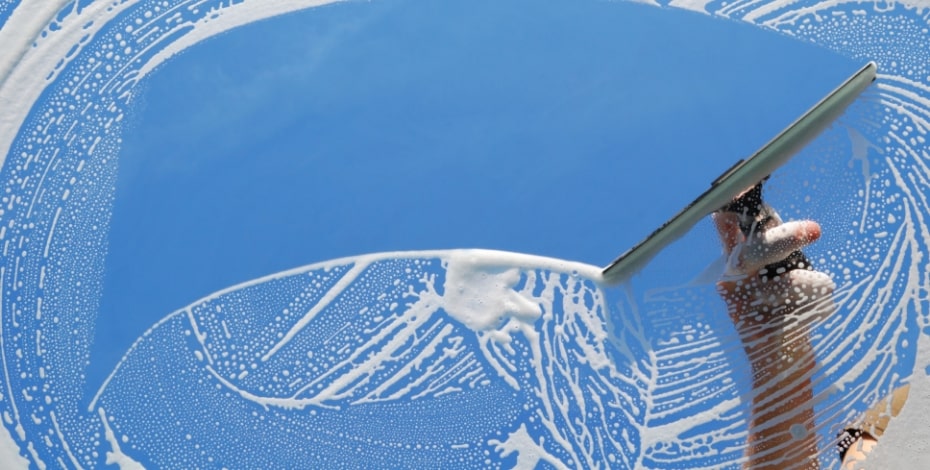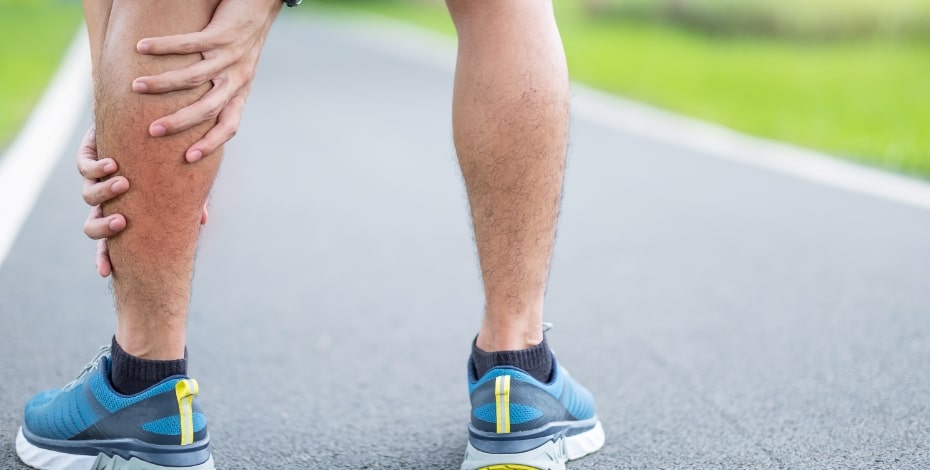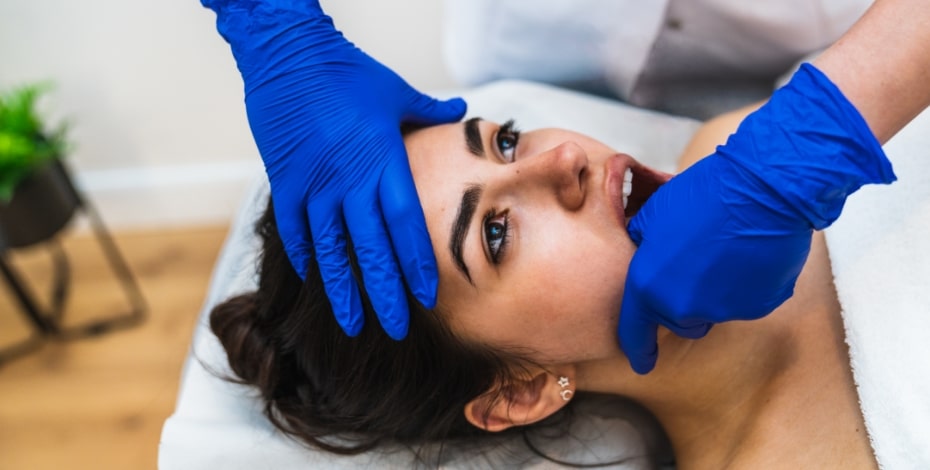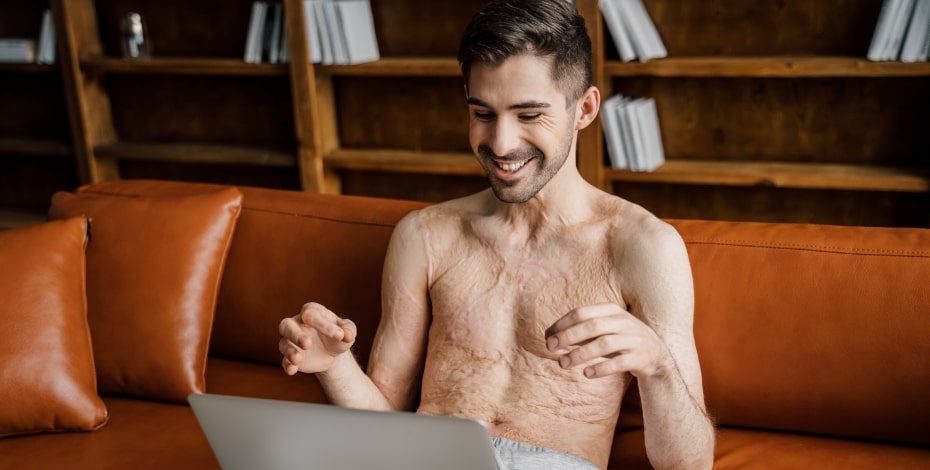
A yarn about the Voice

InMotion recently set up a conversation between various members of the APA, both Indigenous and non-Indigenous, about the proposed Voice to Parliament and the debate around it. The following is an edited transcript of the conversation.
Melissa Trudinger (InMotion): What do you think about the upcoming referendum on constitutional recognition for Aboriginal and Torres Strait Islander Peoples through a Voice to Parliament?

Anja Nikolic is the CEO of the APA
Anja Nikolic (APA CEO): It is a pity and a travesty that it has to come down to a referendum and that this isn’t something that’s always existed, but here we are.
The 97 per cent of Australians who aren’t Indigenous will get to decide on something that is fundamentally for and about Aboriginal and Torres Strait Islander Peoples.
All of that aside, I welcome the opportunity for us to make progress so I’m a big advocate of the Yes vote.
Small steps are better than no steps.
Kathryn Potter APAM (chair of the APA’s Aboriginal and Torres Strait Islander Health Committee): I support the Yes vote and believe we need to ensure we continue to take steps in the right direction.
Understanding the issues of the Voice to Parliament allows the nation to strive for such progress into the future.
This is not the end point, and if successful, this is the next best step.
Hearing all the views reminds us of where we can keep moving.
Natania Huff APAM: I think it’s necessary and important.
The Uluru Statement from the Heart was presented to us all in 2017 and now that we have this opportunity to start taking one of the first actions.
As a non-Indigenous woman, I respect the fact that the Uluru Statement from the Heart was very broadly discussed and debated among Aboriginal and Torres Strait Islander Peoples across Australia, in regional dialogues as well as at the gathering at Uluru, and take my lead from that.
Alyce Merritt (APA Special Advisor): I agree with it.
As an Aboriginal person, I think it’s an important step but also just one component of what needs to happen.
People need to be brave enough to educate themselves about the Voice, what it is and what it’s going to do.
It’s not a Canberra-based bureaucracy full of appointed nominees from Aboriginal and Torres Strait Islander communities as has been done in the past.
Aboriginal and Torres Strait Islander Peoples from all over the country will get to have a say.
If people understood more about the Voice, I think they would be more inclined to support it.
Aaron Beck APAM MACP (deputy chair, National Advisory Council): A majority Yes vote would show a level of maturity and social responsibility for our country and I will be very pleased if that happens.
It’s long overdue and it’s embarrassing—if we compare ourselves to the way other countries acknowledge and involve their Indigenous Peoples, we are well behind.
Melissa: How do you think the Voice will improve health outcomes for Aboriginal and Torres Strait Islander Peoples?

Kathryn Potter is the current chair of the APA's Aboriginal and Torres Strait Islander Health Committee.
Kathryn: For me it’s a matter for Aboriginal and Torres Strait Islander Peoples’ self-determination.
People should have a voice and influence on policies that affect them.
I hope it will help shift the mindset for everyone in this country—if we see this shift at the top, then this is how we will act in our day-to-day lives.
Anja: I’m not a healthcare professional but one of the main things I’ve learned is that you view the patient as a whole person.
You don’t look at a symptom in isolation, ignoring who the person is, how they live and how they interact with the world around them.
So this notion of wellbeing without being seen, heard or recognised doesn’t make any sense in healthcare.
Recognition is an absolute prerequisite to achieving health equity and to providing appropriate healthcare to Aboriginal and Torres Strait Islander Peoples.
Natania: Access to health and the issues related to health will be different for different communities—compare the inner city, for example, to a very remote part of Australia where there may not be a health worker at all.
It’s important that the Voice represents what those perspectives are, where the gaps are and how things can be improved so that people feel comfortable and safe, confident that they’re being heard and that their cultural perspectives are being respected.
Kathryn: There’s a lot of evidence—and it’s not just specific to Aboriginal and Torres Strait Islander Peoples or Indigenous Peoples around the world; it’s applicable to anyone—that if you involve people in decision-making processes about things that affect them, it leads to better outcomes.
Following that principle, if we have a say in the things that affect us and in health policies and programs, we’re going to get better health outcomes.
Here in Australia, within the Aboriginal Community Controlled Health Organisations, we have seen improved health outcomes delivered through that model of care.

Aaron Beck is the deputy chair of the APA's National Advisory Council.
Aaron: Indigenous communities know what is best for them and what will work for their situation and can effectively advise Parliament about decisions that specifically relate to them.
I think we need to harness the knowledge that’s already exists within Indigenous communities and not be directed by government what they consider the most effective approaches to healthcare to be.
Alyce: There are a lot of intersections with other social factors.
Having a voice on things like education, employment, housing and justice is also important for our health and overall wellbeing.
Melissa: Why you think it’s important to consider voting Yes?
Anja: Ultimately, this is an issue for all Australians, whatever career they’ve chosen.
It’s a question of citizenship.
My plea to people is to make an informed, pragmatic choice, not one driven by fear or ideology.
If you actually look at the practical side of things, it becomes a lot less scary to people and more intuitive.
So physios or otherwise—be educated on what this means, make an informed choice and do it as a citizen, not necessarily as a health professional.
Kathryn: That’s lovely; I totally agree with Anja.
Amongst the many Closing the Gap targets, we’re obviously very interested in the specific health targets.
There are some huge health gaps still existing so you would hope that that’s an easy link for people to make at the least, to help them make the best voting decision.
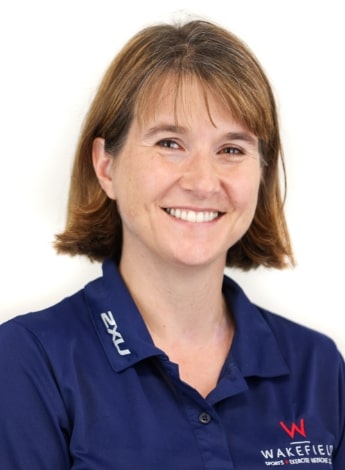
Natania Huff is the chair of the South Australian chapter of the Aquatic National Group.
Natania: The way I’ve talked about it with colleagues is to say that physios have a number of qualities that strongly align with voting Yes.
When we listen to our patients, we better understand their needs.
Patient-centred care leads to trust and treatment options that align with patient values, creating the best conditions for positive change.
As professionals, we also seek guidance from evidence-based research and expert panel consensus to guide our decisions.
The Uluru Statement from the Heart and the Closing the Gap reports make it clear that change is necessary and that Aboriginal and Torres Strait Islander Peoples need a better voice.
I spoke with a fellow health worker recently who was intending to vote No, and I asked him, ‘don’t you want (to provide) the best care for every person that you look after? Don’t you want to know that they feel safe and heard?’
I borrowed Noel Pearson’s recent comment and asked, ‘what have you got to lose by voting Yes?’
Alyce: I want to echo what Anja and Natania both said, and I think education is key in helping people make informed decisions.
Physios, as health professionals, want the best outcomes for their patients and surely the Voice can only contribute to that.
Aaron: Physiotherapy is a well-respected, valued and trusted profession and people look to us for guidance on health topics.
There are going to be different views out there but I think this referendum is a chance for physiotherapists to show their support and deliver on some meaningful progress for Aboriginal and Torres Strait Islander Peoples, particularly in health.
Melissa: Some members think the APA shouldn’t be getting involved in the Voice debate—what’s your answer to that?
Anja: If you have an opportunity to lead, to make use of your position of influence in the world to do something good, then it’s weak and wrong not to take it.
I feel that way about lots of issues, such as climate change and the rights of refugees who come to Australia.
Whenever we say something publicly that is not, strictly speaking, about physio only, we hear that objection.
But how else are we as a society going to make progress in any of these areas if everyone says ‘that’s not my space’?
You are a citizen and therefore it is your responsibility to have an opinion on issues that matter to us all.
Melissa: Are there parallels between what the referendum is trying to achieve and what the APA’s Reconciliation Action Plan (RAP) is trying to do on a smaller scale?
Anja: The RAP is about recognition and the advancement of Reconciliation and you can’t have Reconciliation without truth- telling, without voice, without a mechanism to enshrine and embed that voice for all time.
I think they’re very congruent, even though the RAP is looking at smaller ways of getting there rather than constitutional change.

Alyce Merritt is the APA Special Advisor on Aboriginal and Torres Strait Islander Issues
Alyce: The RAP’s vision statement is strongly aligned with the Voice.
It’s about eliminating racism in society, building stronger relationships with Aboriginal and Torres Strait Islander Peoples in communities and ensuring that Aboriginal and Torres Strait Islander ways of being and doing, culture and knowledge are valued by society.
The social aspects are certainly aligned with what the Voice is trying to achieve.
Kathryn: Often as an Indigenous woman I’ll hear mob say ‘it’s not up to us’.
That is, it is not Aboriginal and Torres Strait Islander people’s job to achieve reconciliation.
It is everyone’s responsibility.
The Voice is a platform to be heard and work together for much needed changes.
The APA ensures there are First Nations Peoples involved in their RAP.
Furthermore, they don’t put the responsibility on the First Nation’s members to achieve the outcomes.
Rather they are guided by the advice and are accountable for the deliverables as an organisation.
These are the parallels that I observe.
Alyce: I agree with Kathryn and I think that’s a very important point to make—it’s not Aboriginal and Torres Strait Islander Peoples’ responsibility to lead in this space.
It’s about non-Indigenous people redressing the wrongs of the past and helping us get our voices heard going forward.
Aboriginal and Torres Strait Islander people make up three per cent of the population; we need support from the other 97 per cent to help make this happen.
Kathryn: There’s one more point I’d like to bring up.
When your vote is literally Yes or No, you don’t get a space to write your essay next to it explaining your stance.
This can make it tough for people.
That’s why having these conversations is important.
You can start to think critically: what are all the nuances around No?
What are the nuances around Yes?
If it is a No, if it is a Yes—what’s going to happen; what are we going to do?
I am an optimist and I hope that we get a Yes outcome so that we can keep pushing forward and progressing.
No matter what happens, there are a lot of good people supporting what is right, learning and listening as truths continue to be shared.
Anja: A Yes vote opens doors to other possibilities.
It starts with a small step in the right direction that leaves open the possibility of other things to come.
My fear is that a No vote would mean 20 years of no movement on this.
Maybe I’m being too pessimistic but that may be the reality we face.
It would be incredibly divisive.
Natania: It’s clear that the way things are at the moment isn’t working for Aboriginal and Torres Strait Islander Peoples in terms of health and wellbeing.
Even my health worker acquaintance said they’re not working, but he didn’t seem to think that doing something different was necessarily the right approach.
I hope he’s had a think about it since we had our chat.
>> Visit tinyurl.com/3rfe5zv4 to read the APA’s Voice to Parliament statement ahead of the 14 October referendum.
Anja Nikolic is the Chief Executive Officer of the APA. Anja has held a variety of roles at the APA, most recently General Manager of Member Engagement.
Kathryn Potter APAM is the chair of the APA’s Aboriginal and Torres Strait Islander Health Committee. A proud Kamilaroi woman and physiotherapist, Kathryn is currently the Director of the Aboriginal and Torres Strait Islander Health Partnerships Team with the ACT Health Directorate. She lives and works between Yugambeh, Ngunnawal and Ngambri Countries.
Natania Huff APAM is a physiotherapist from Adelaide, on Kaurna Country. She is the chair of the South Australian chapter of the APA Aquatic national group and is also a member of the Pain national group.
Alyce Merritt is the Special Advisor on Aboriginal and Torres Strait Islander Issues at the APA. Alyce is a Wiradjuri woman from the Central West region of New South Wales.
Aaron Beck APAM MACP is an APA Musculoskeletal Physiotherapist and an APA Sports and Exercise Physiotherapist based on Kaurna Country in Adelaide. Aaron is currently the deputy chair of the APA’s National Advisory Council and the SA/NT Branch President.
© Copyright 2023 by Australian Physiotherapy Association. All rights reserved.


